In this page, you can find the complete solutions of the second exercise of
Analytical Geometry chapter from Basic Mathematics Grade XI book published
and distributed by Sukunda Pustak Bhawan.
In the above-mentioned book, analytical geometry is the 9th chapter and has
two exercises only. Out of which, this is the solution of the second
exercise.
Check: Basic Mathematics Grade 11 (Sukunda Publication) Guide:
Grade 11 Basic Mathematics by Sukunda Pustak Vawan Notes and Solutions | Nepal
Disclaimer:
Answers mentioned here are not solved by teachers. These are the solutions
written by a student of Grade 11. Answers are all correct. However, the
language or process of solving the questions might be informal and in
examinations, you might have to add little more language and show more
calculations than what has been done here. So, we highly encourage you to
view these solutions as guide rather than just copying everything mentioned
here. Few questions have been typed while most of them have been updated as
pictures.
SOLUTIONS WILL BE ADDED SOON
1. Find the length of perpendiculars drawn from
a) (0,0) to the line 3x + y + 1 = 0
Solution:
Here,
$(x_1,y_1) = (0,0)$
$Ax + By + C = 3x + y + 1$
Now,
Let the length of perpendicular be p
$p = \left | \dfrac{Ax+By+C}{\sqrt{A^2 + B^2}} \right |$
$or, p = \left | \dfrac{3(0) + 1(0) +1}{\sqrt{3^2 + 1^2}} \right|$
$or, p = \left | \dfrac{1}{\sqrt{10}} \right|$
$\therefore p = \dfrac{1}{\sqrt{10}} $

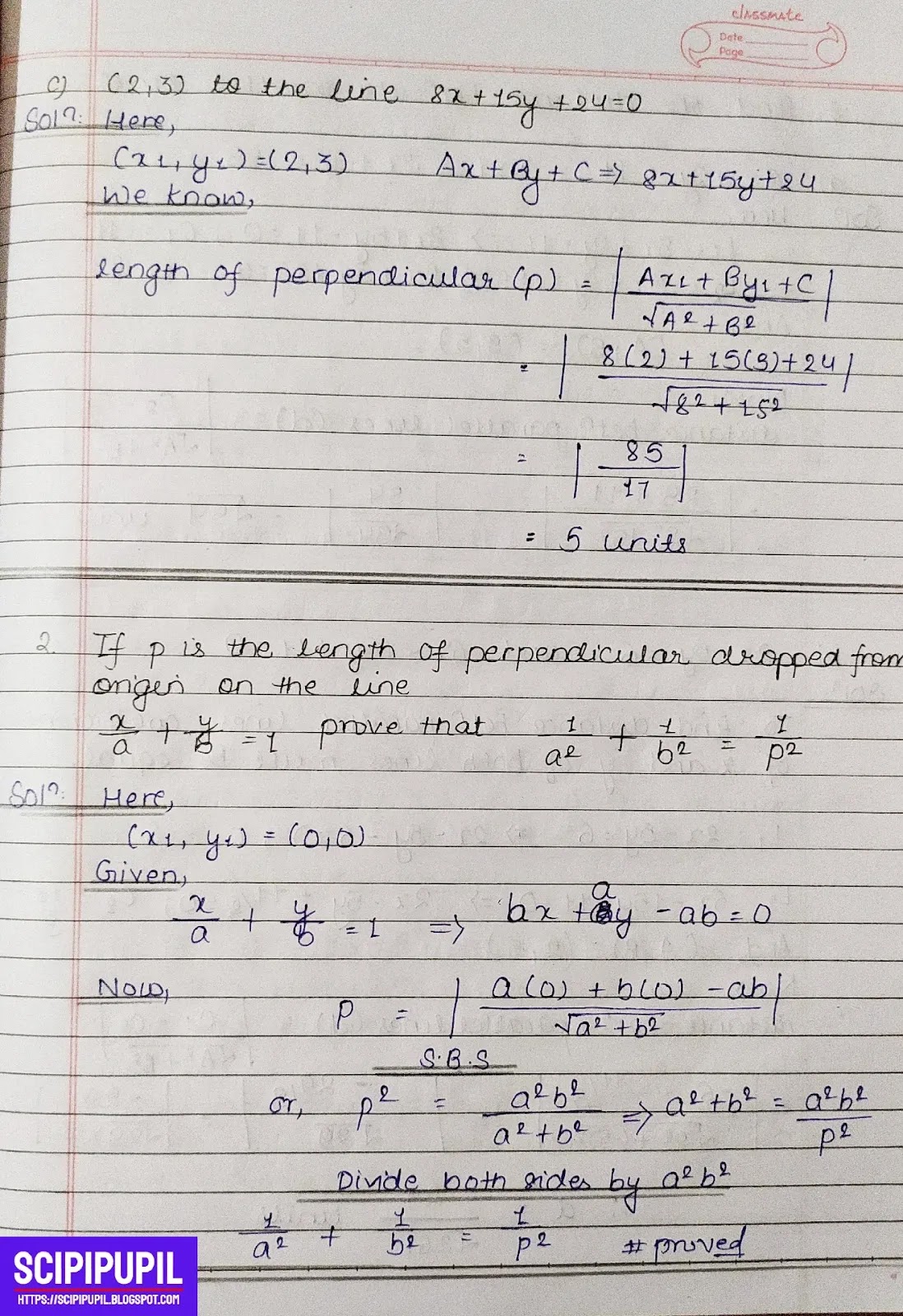
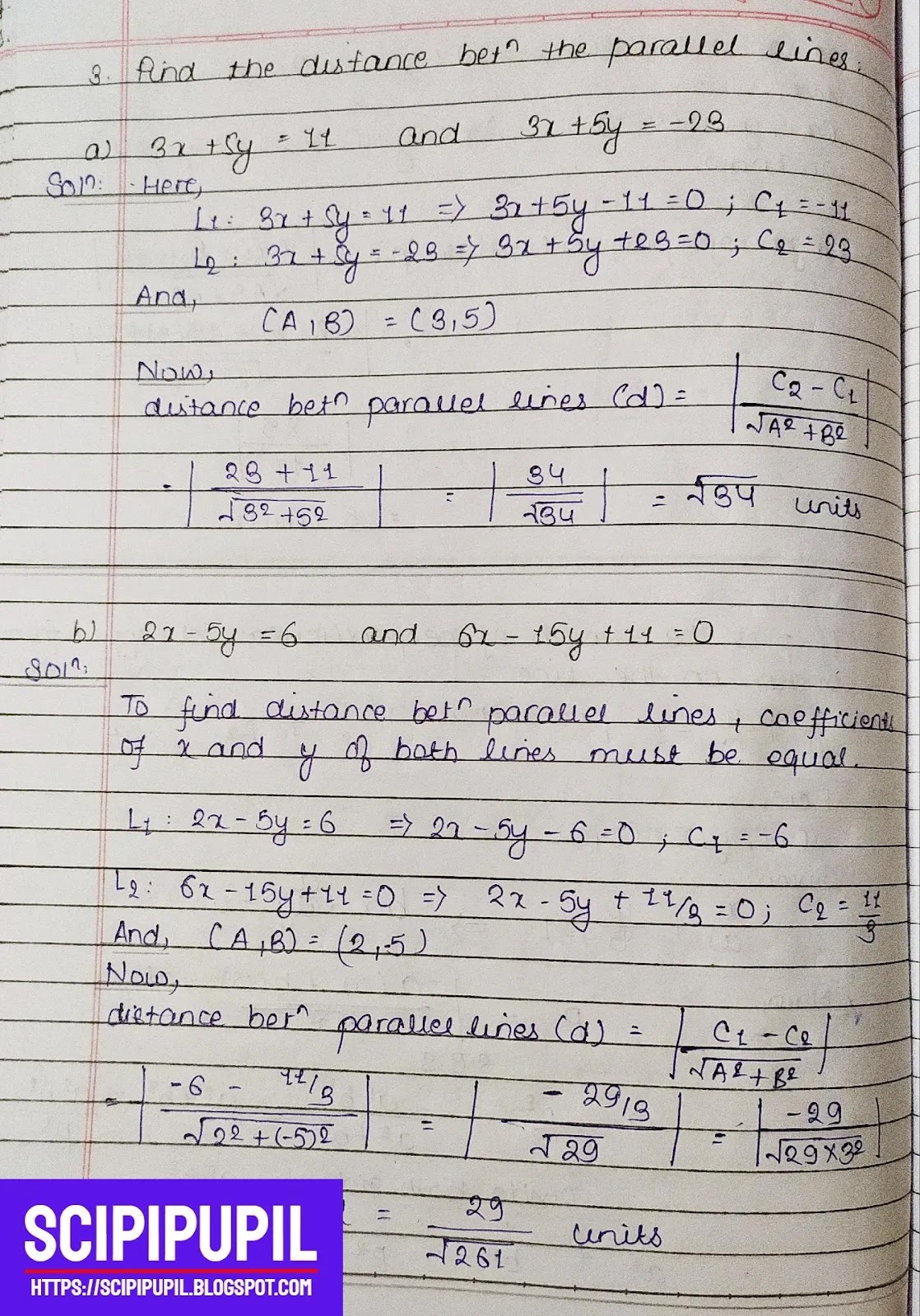
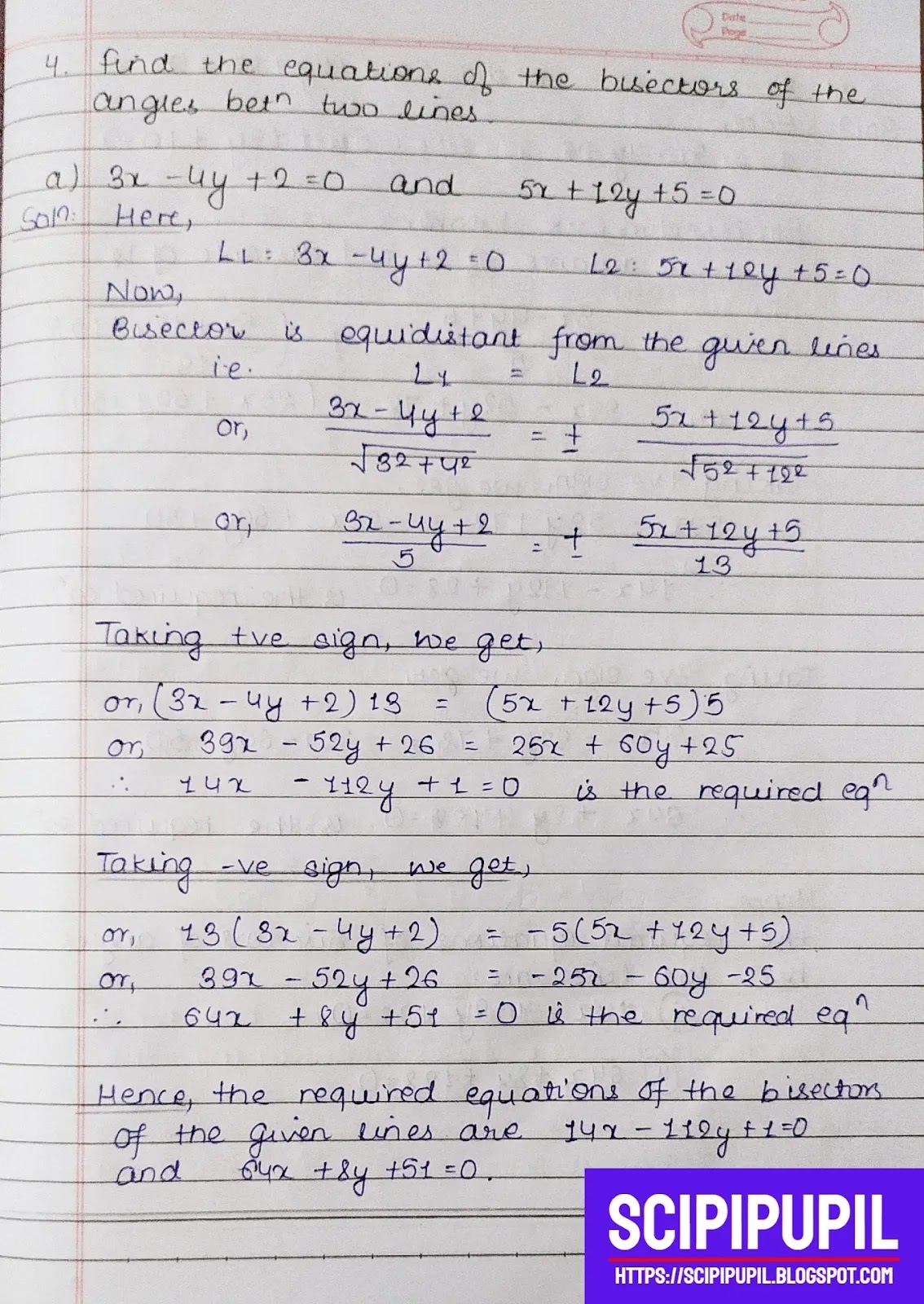
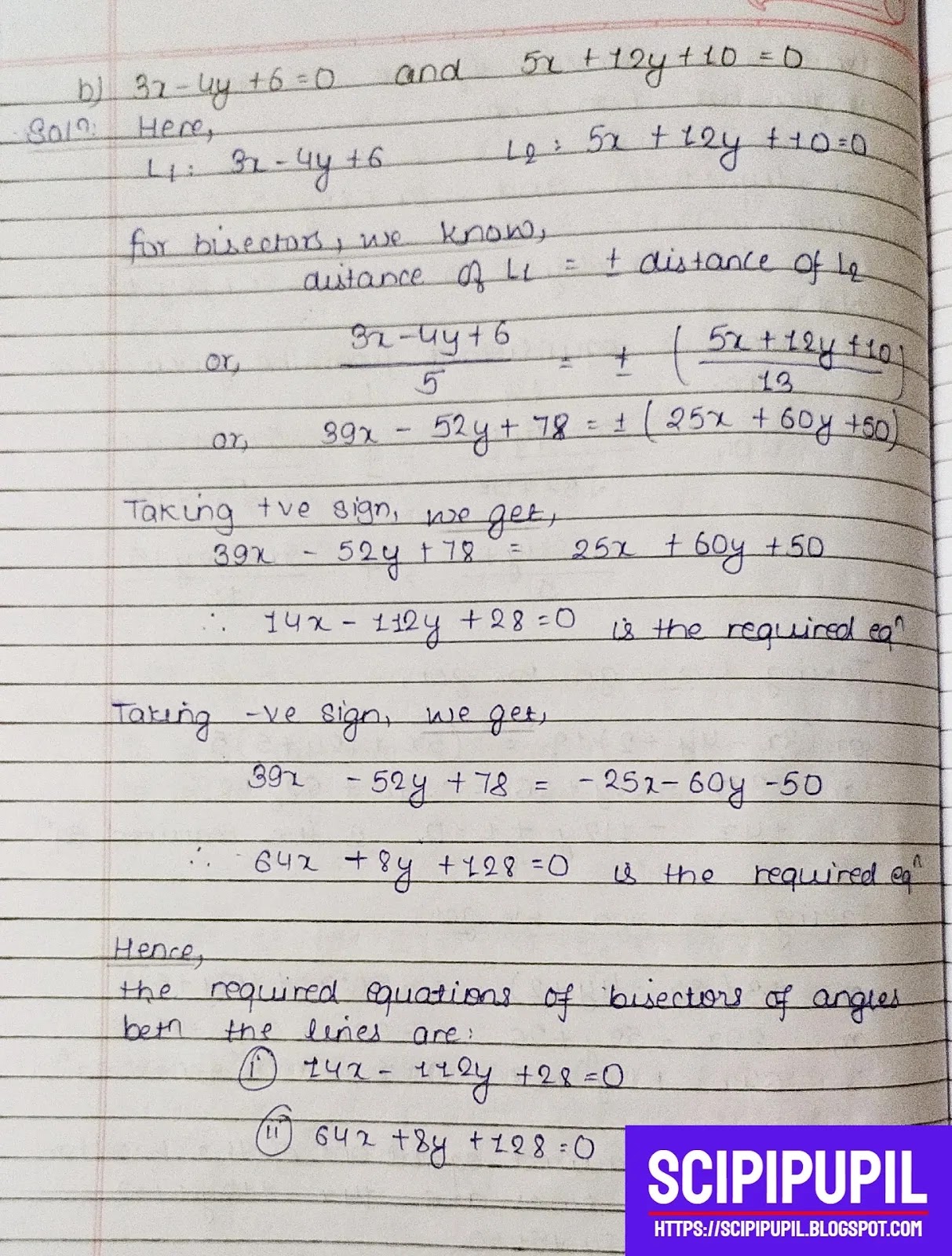

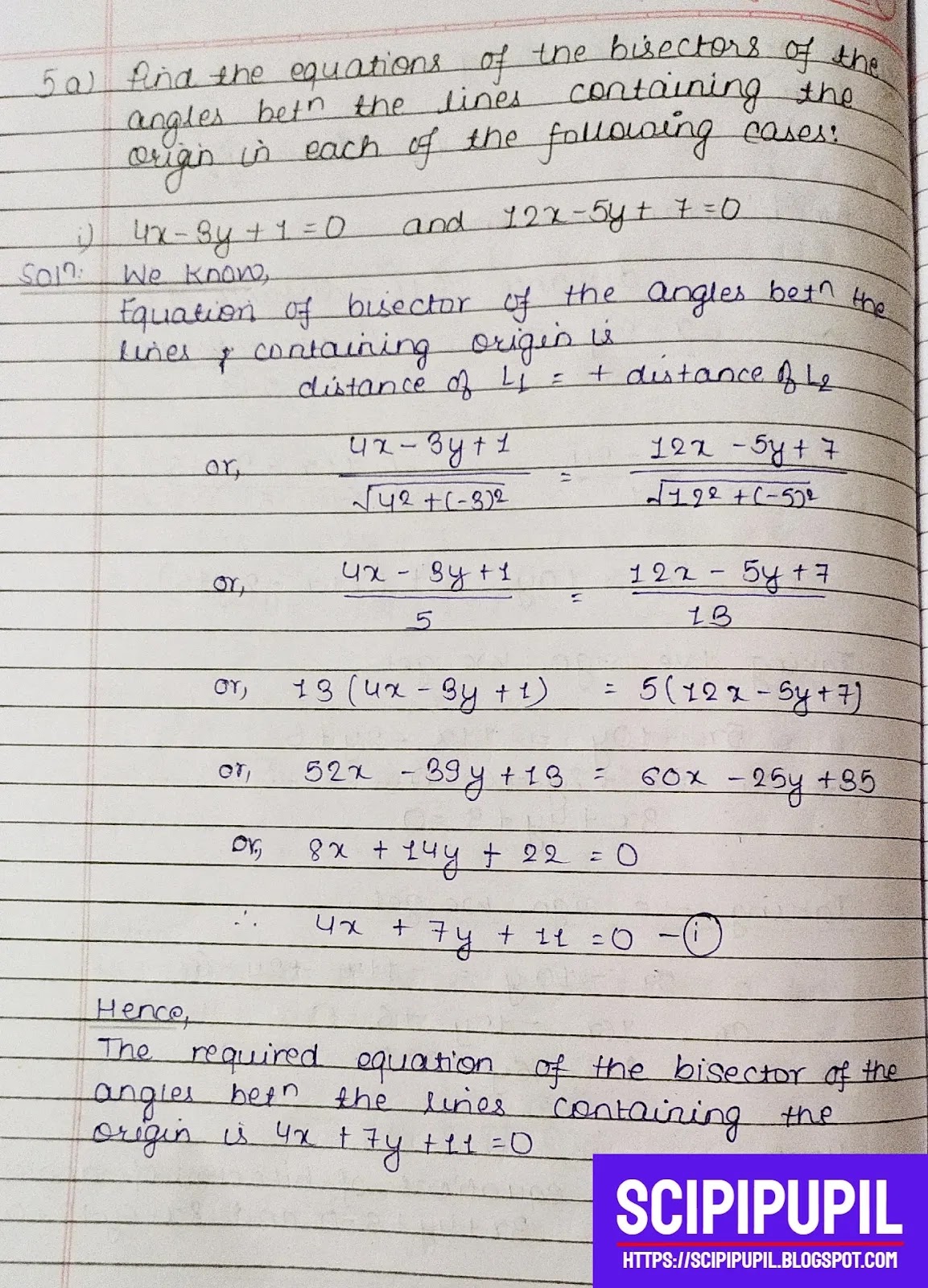
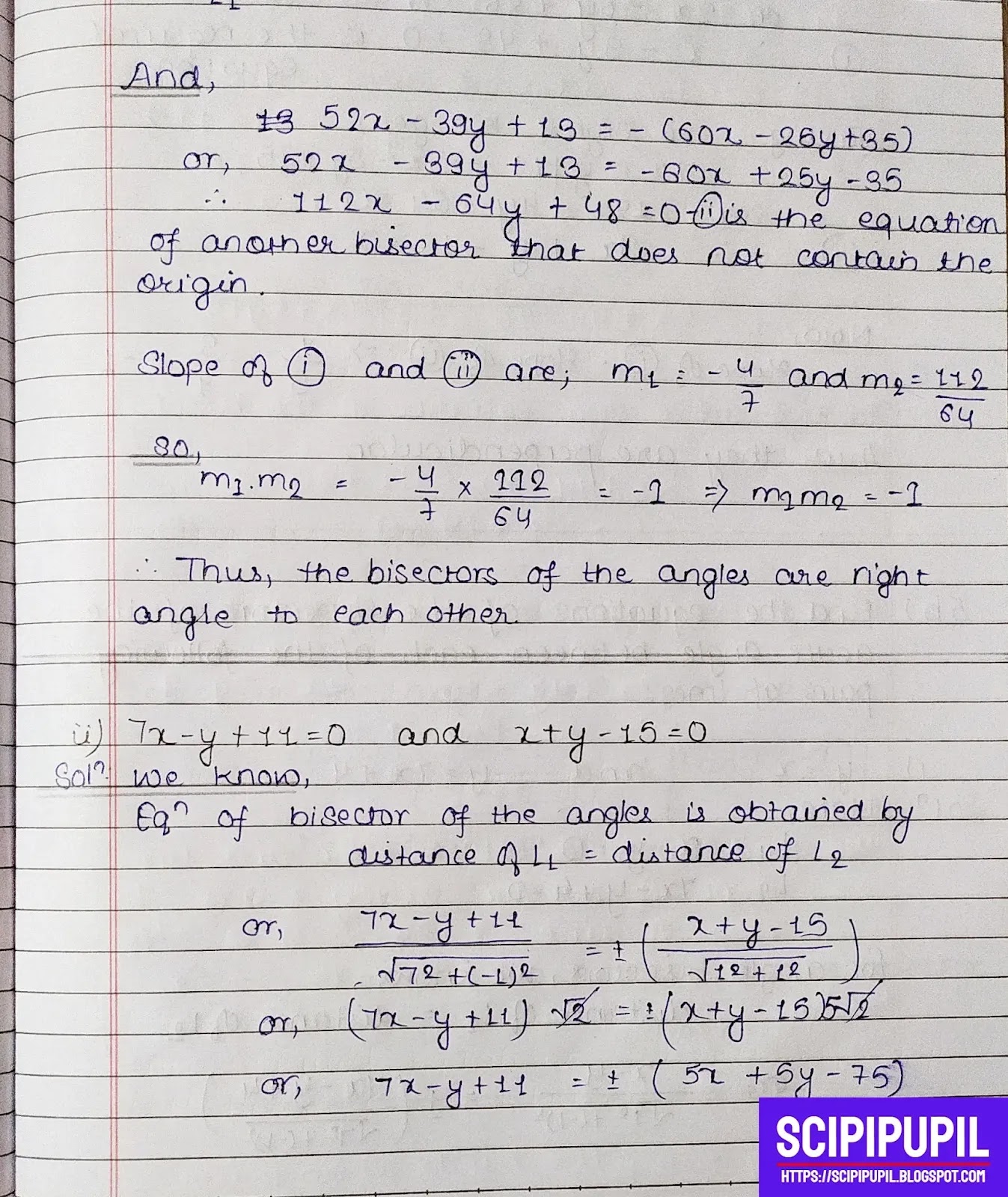
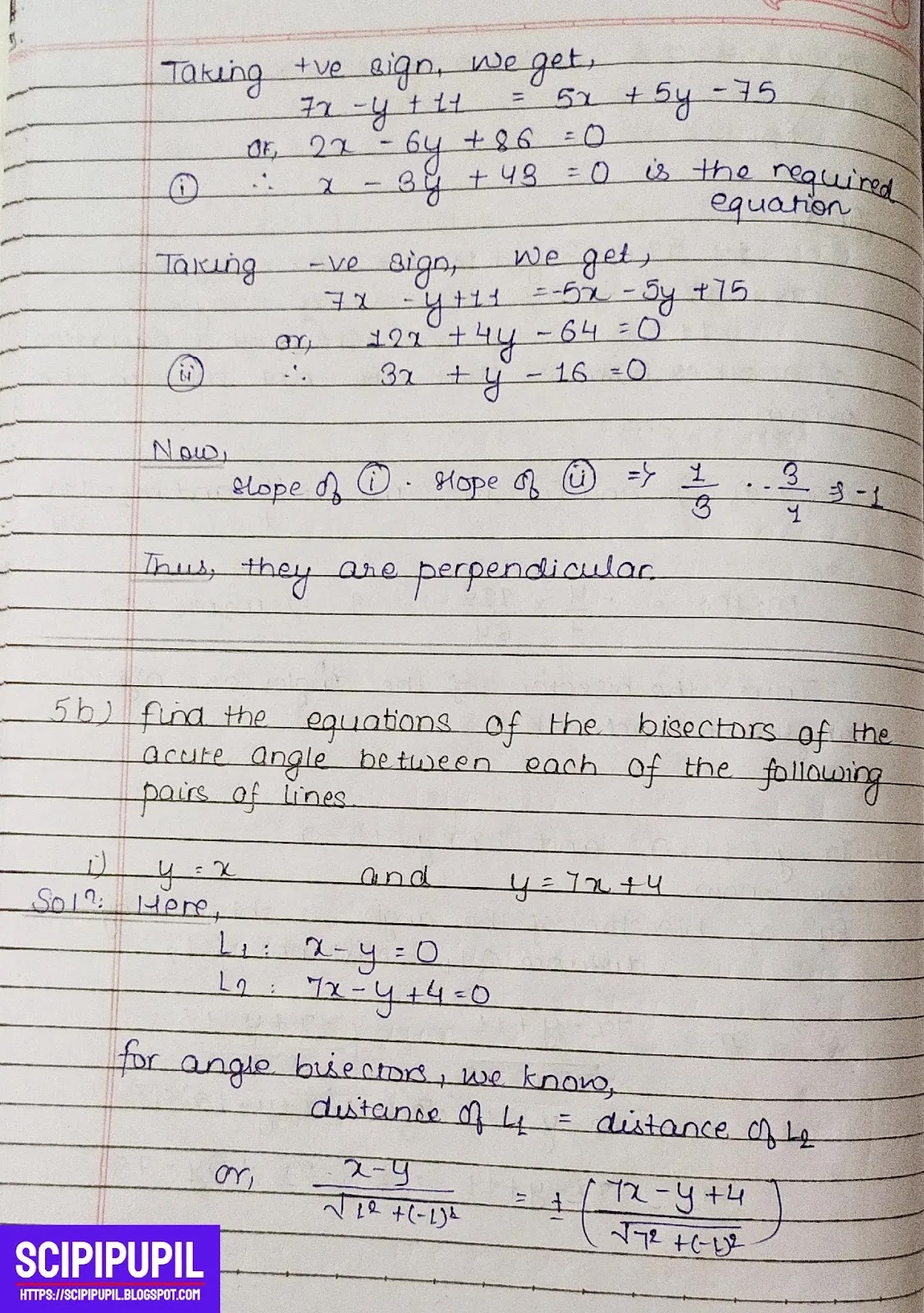
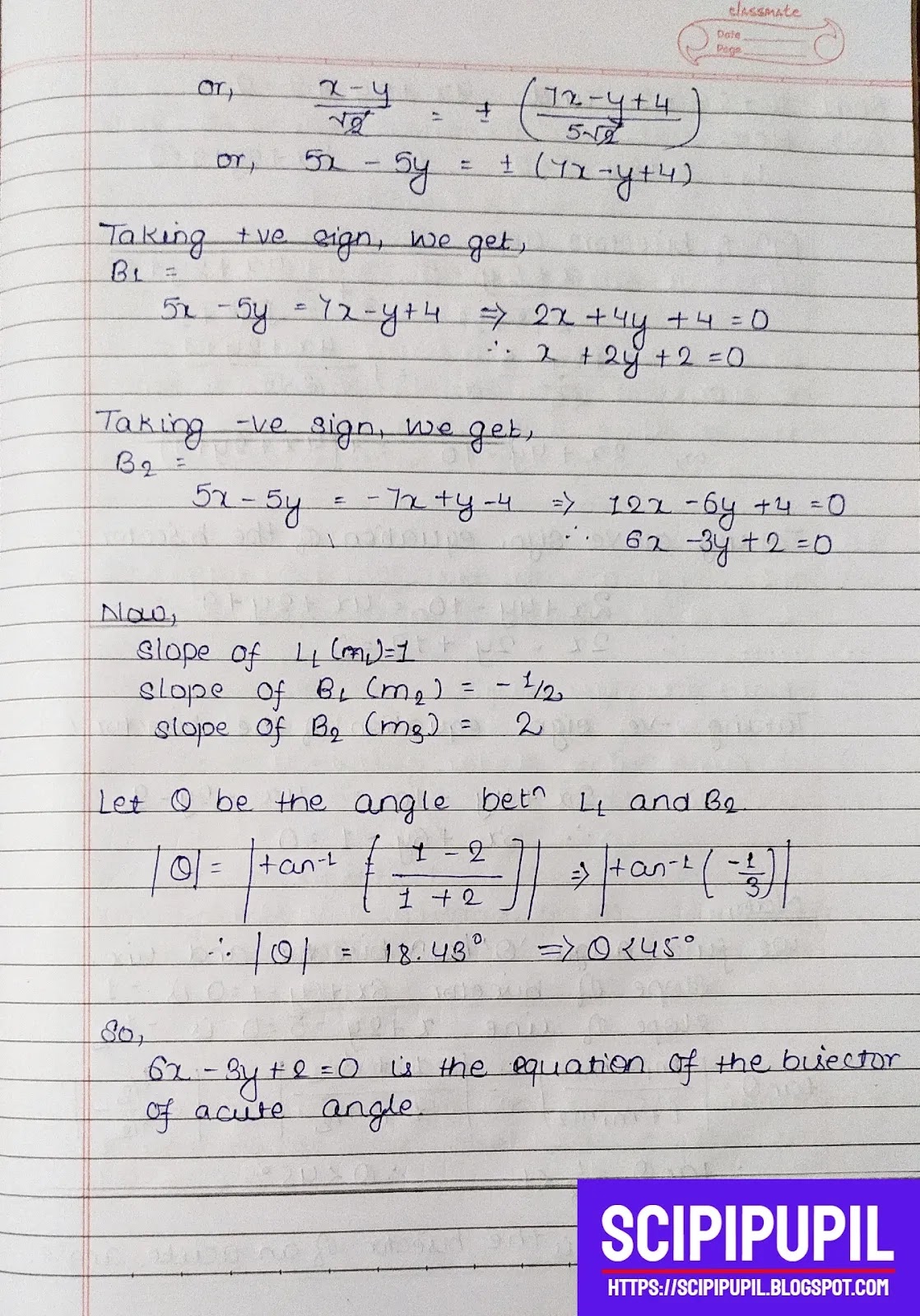
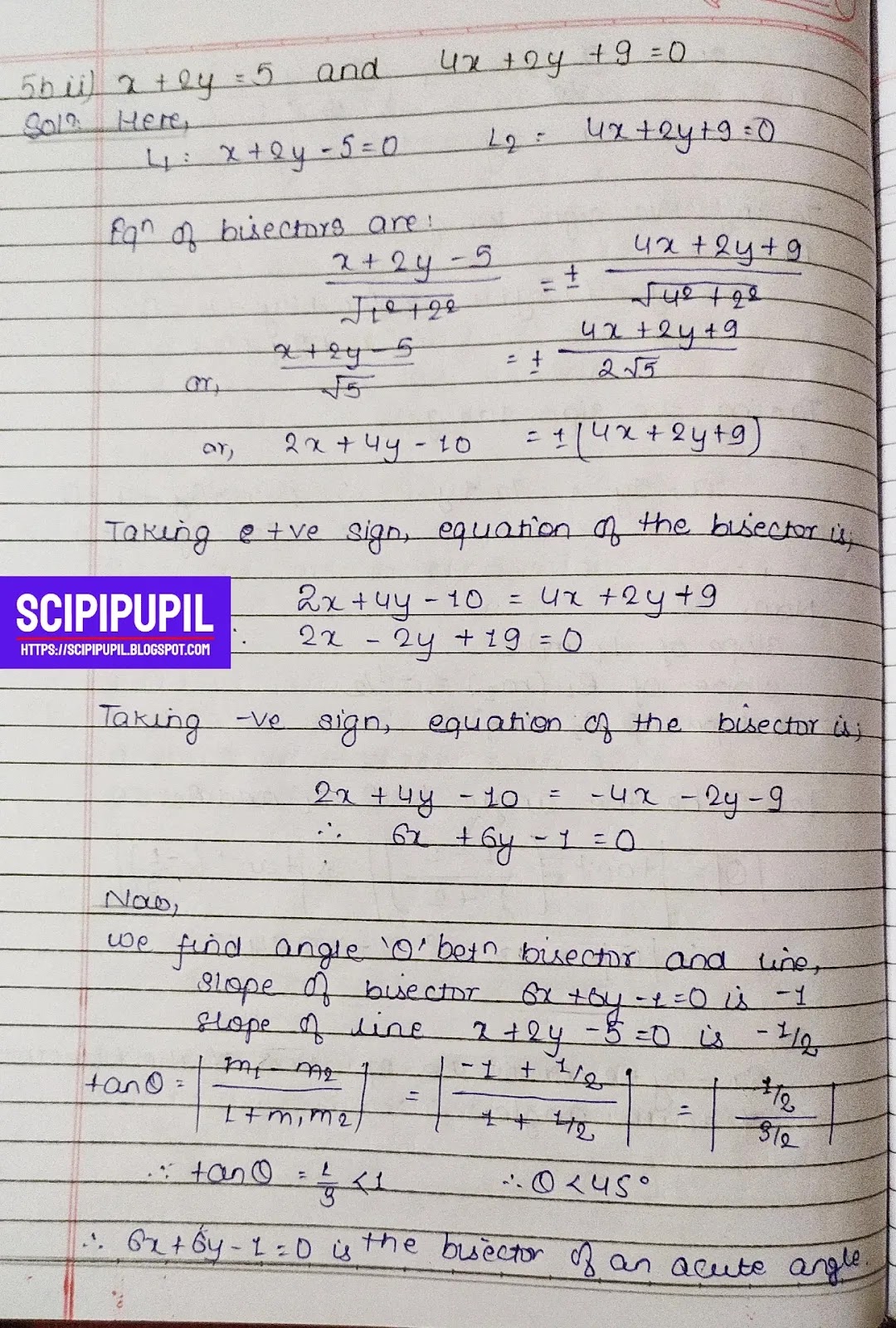
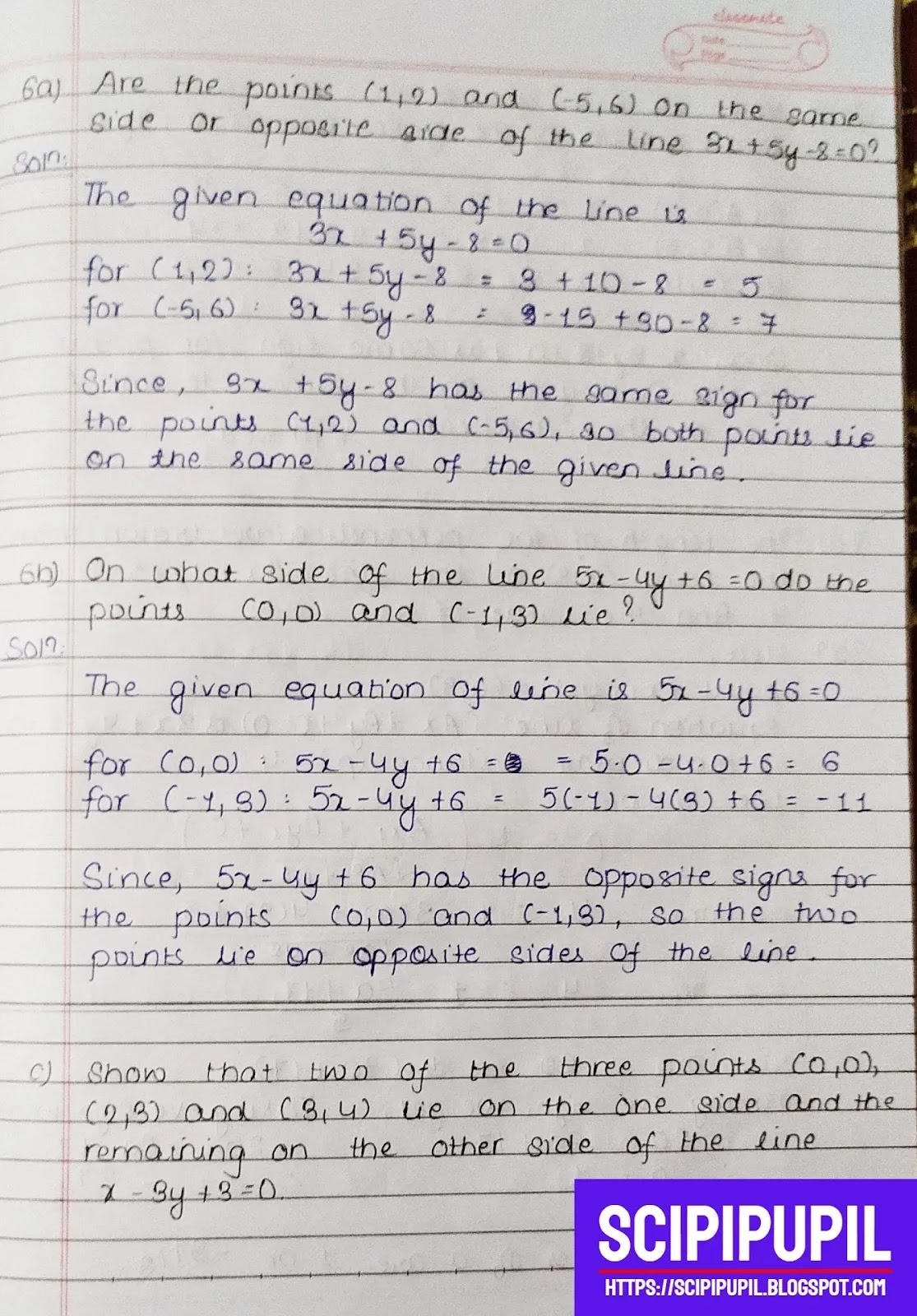
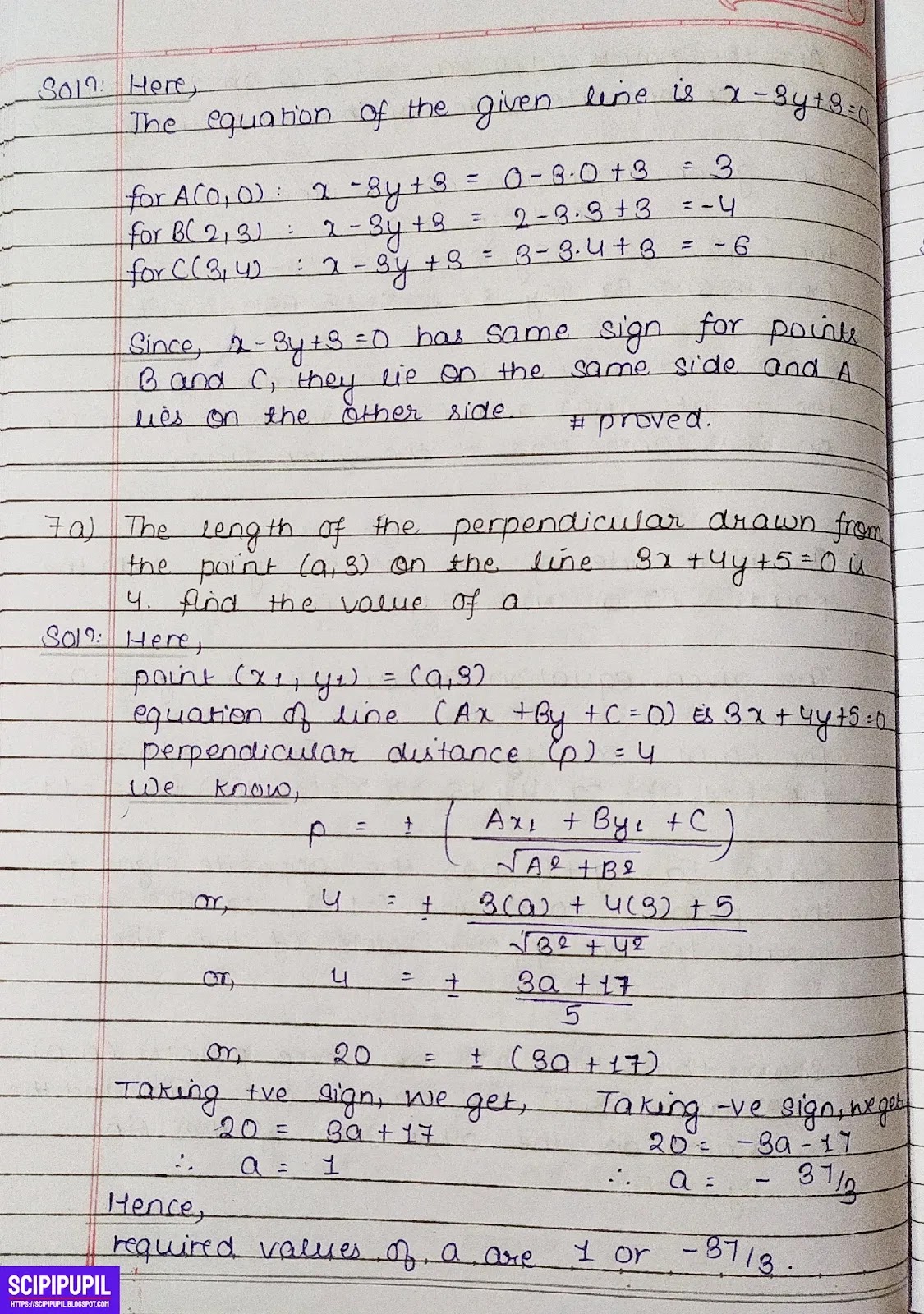
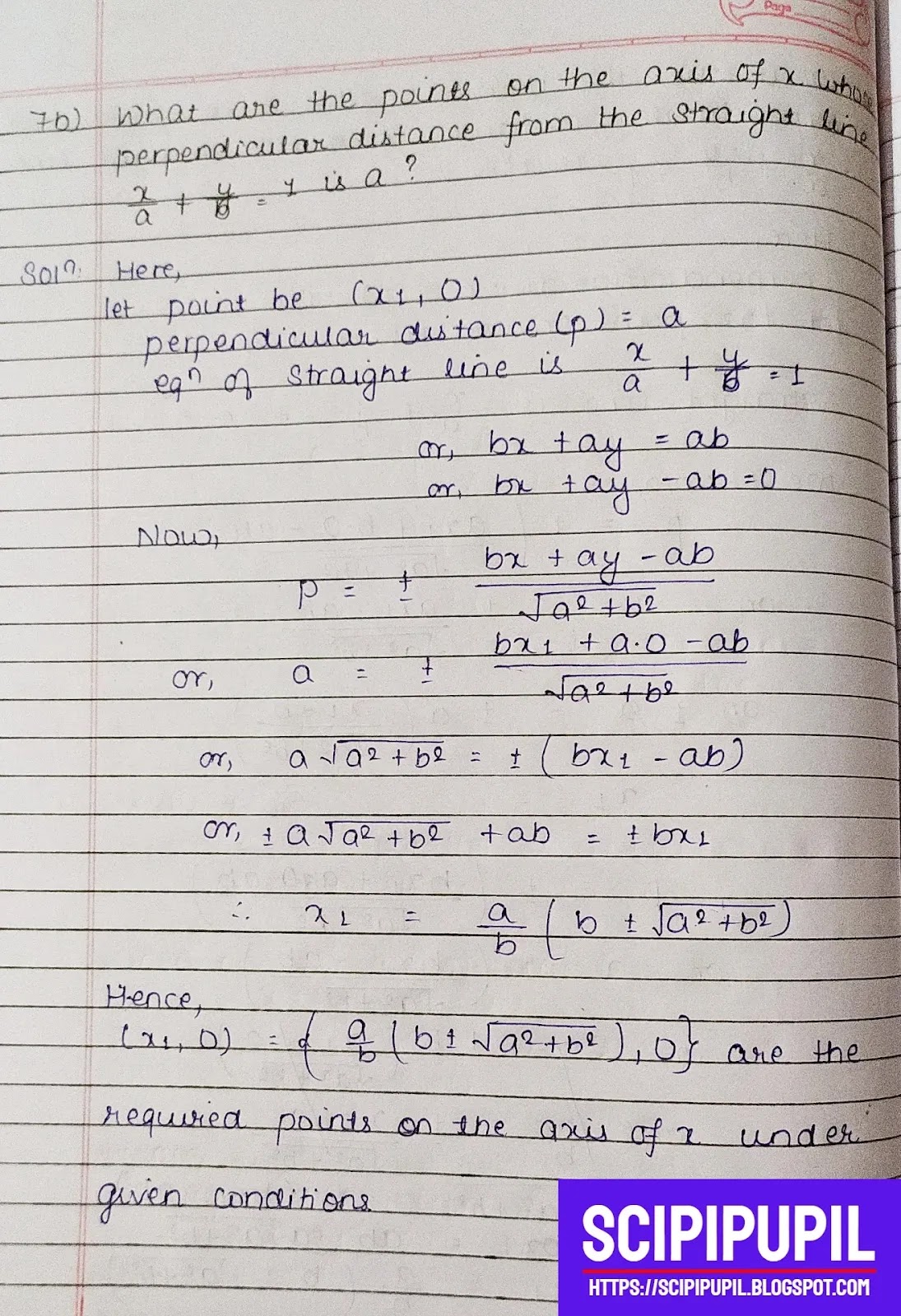
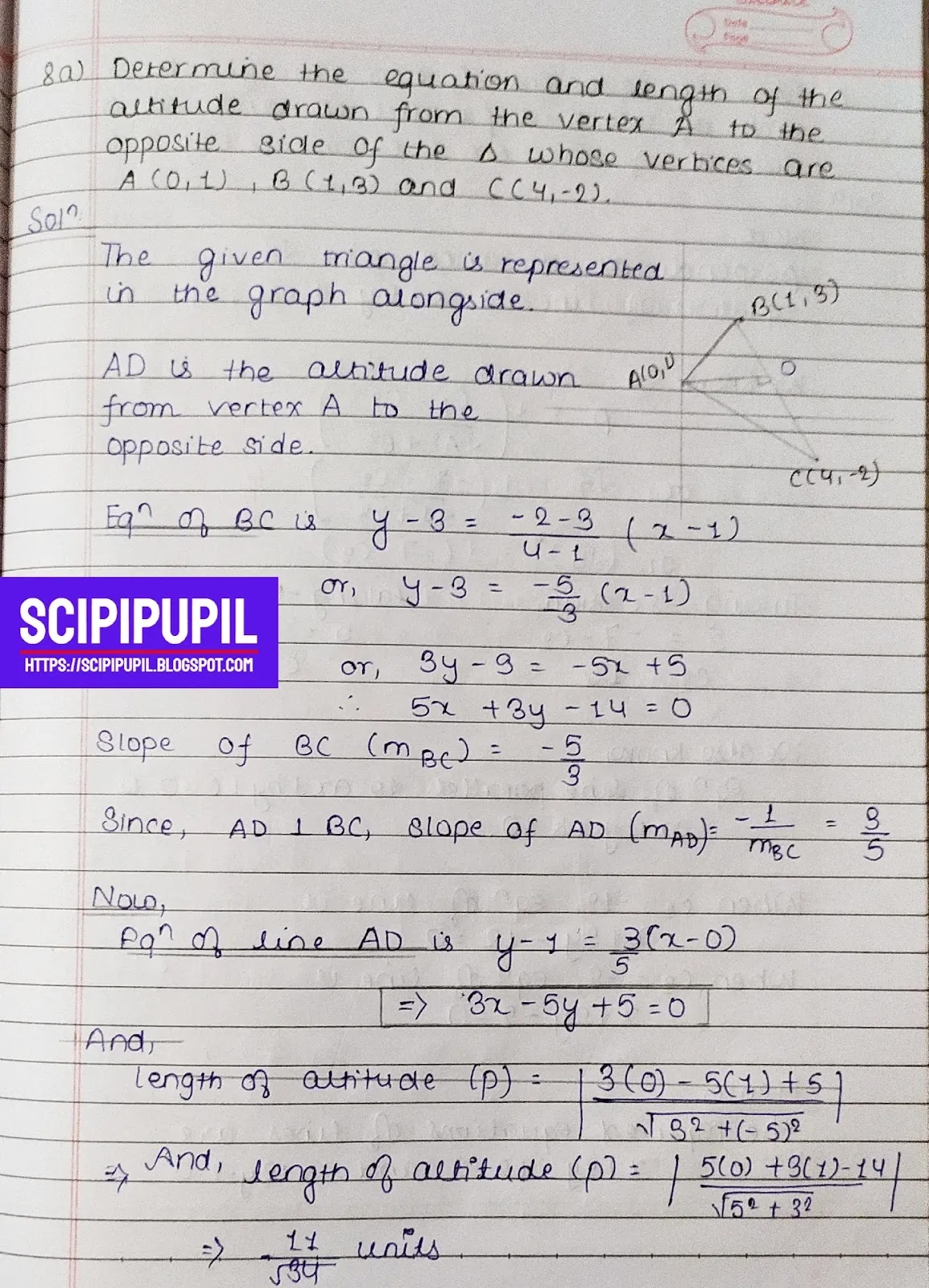
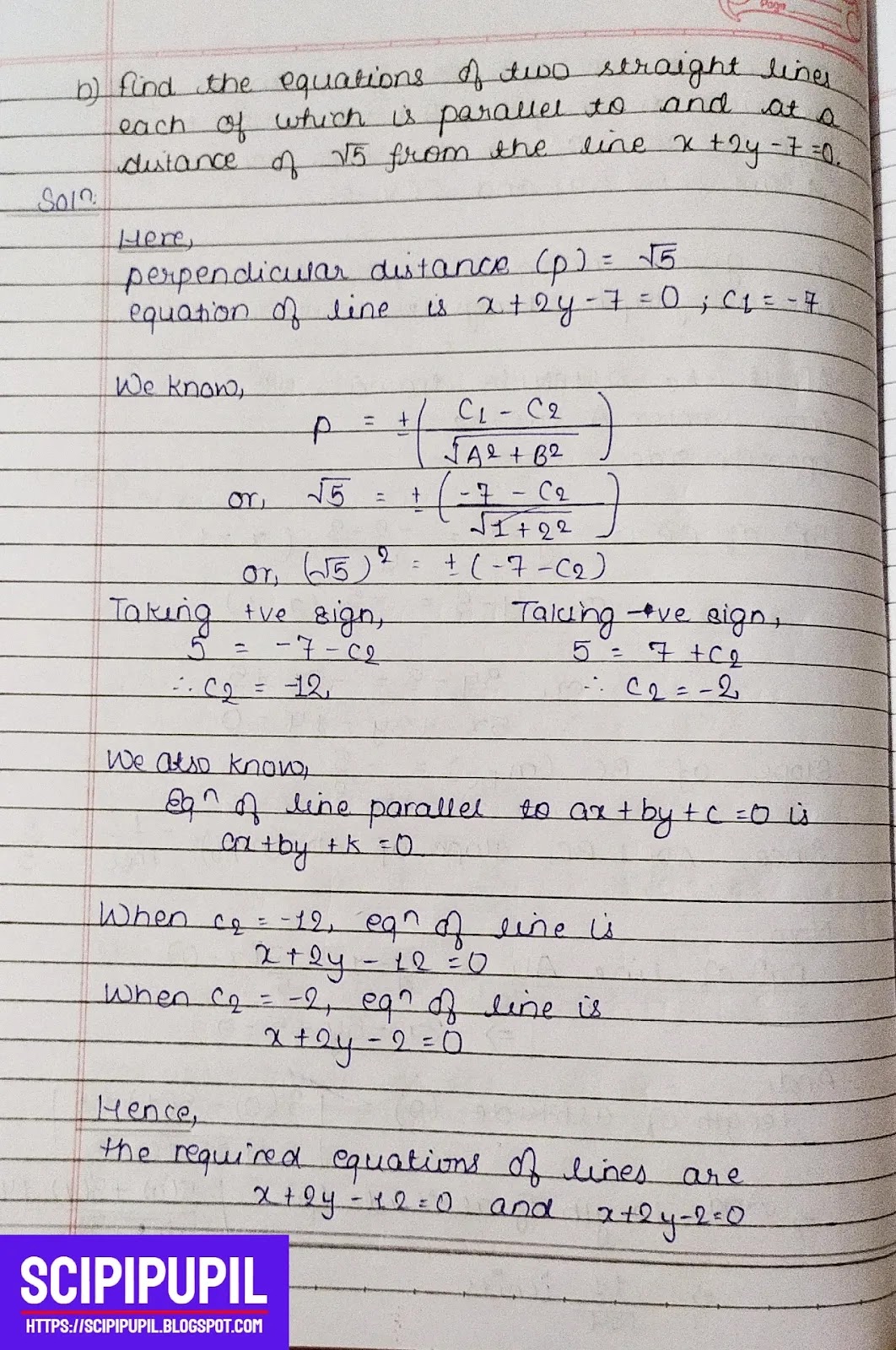
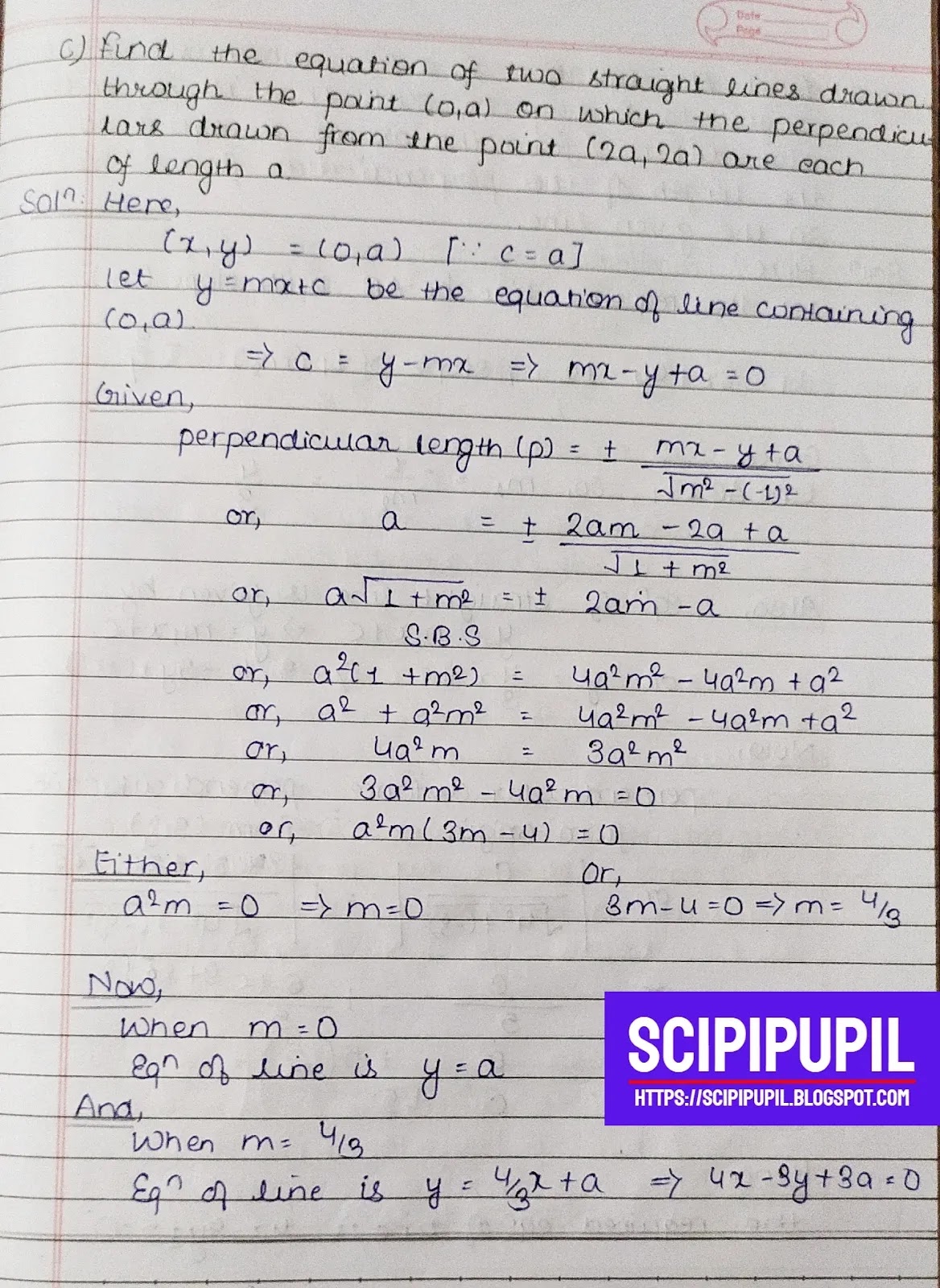
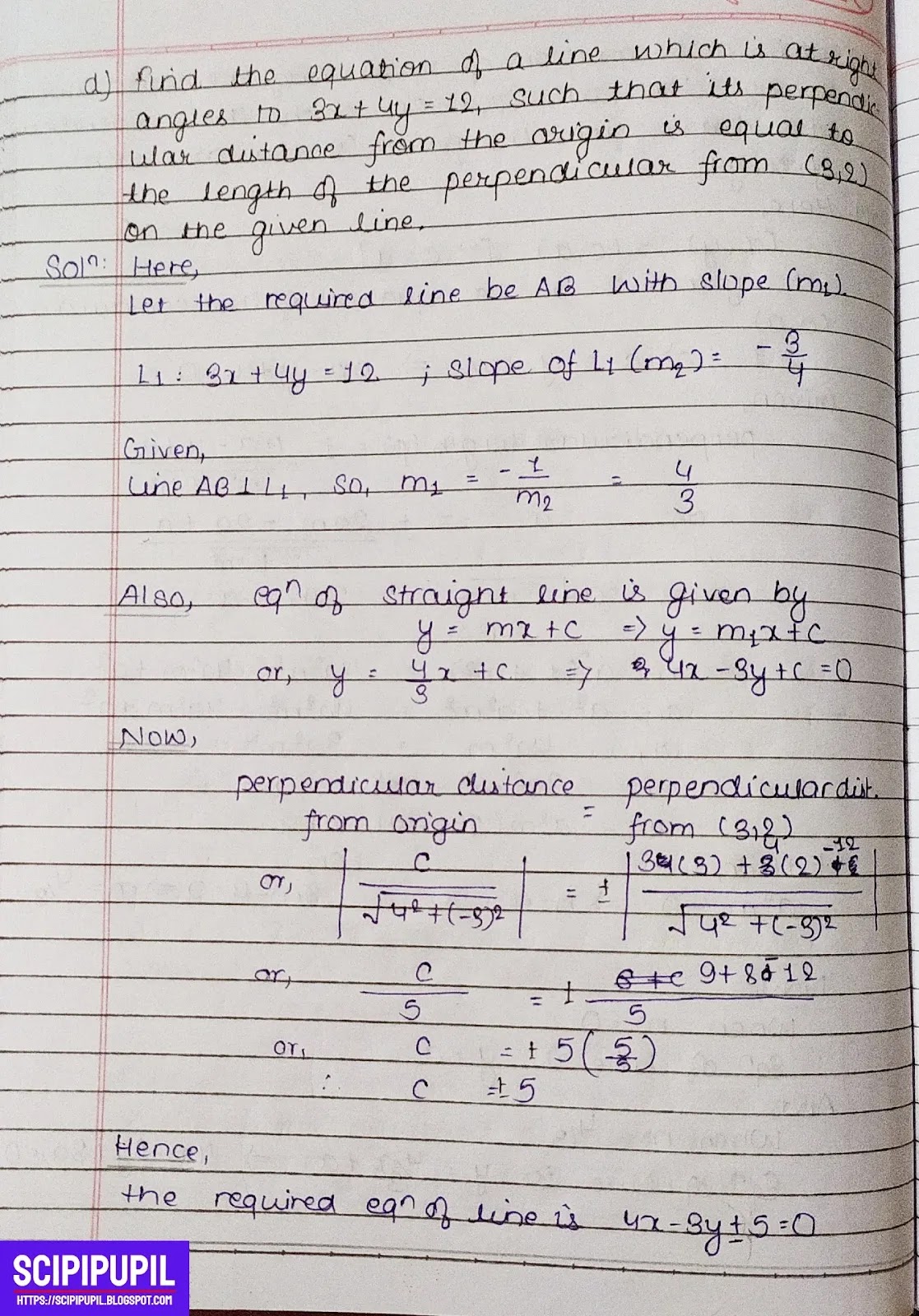
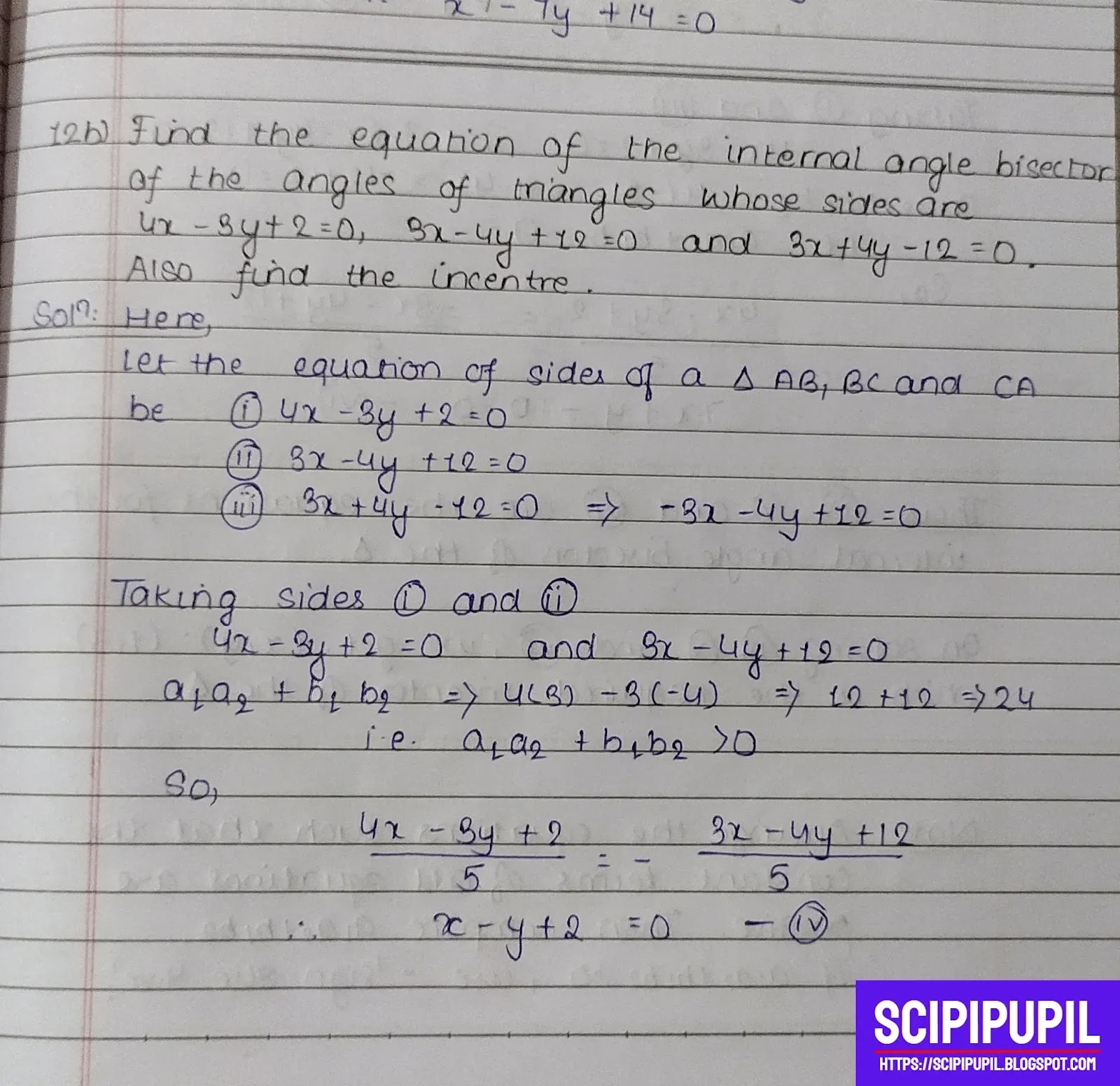
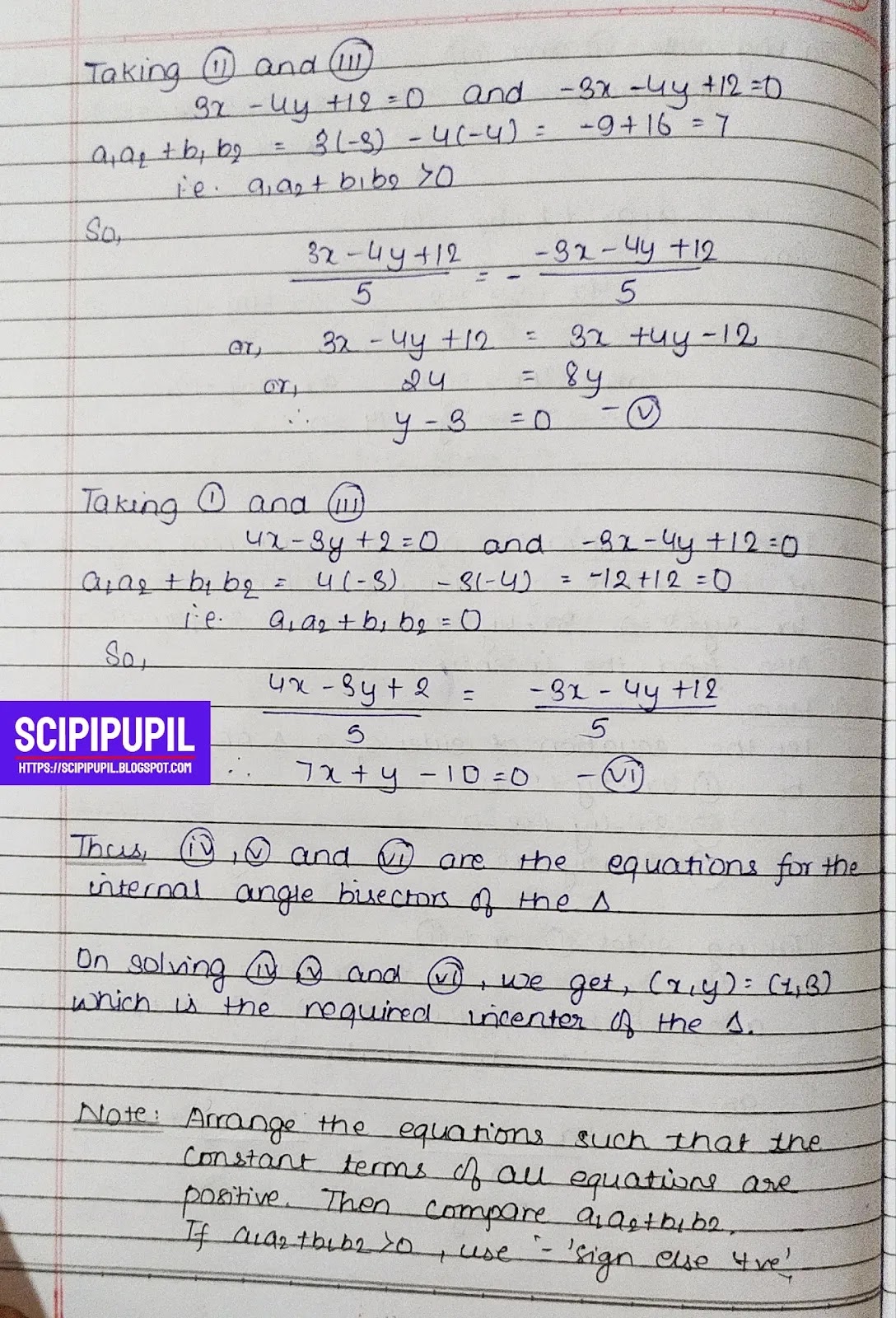
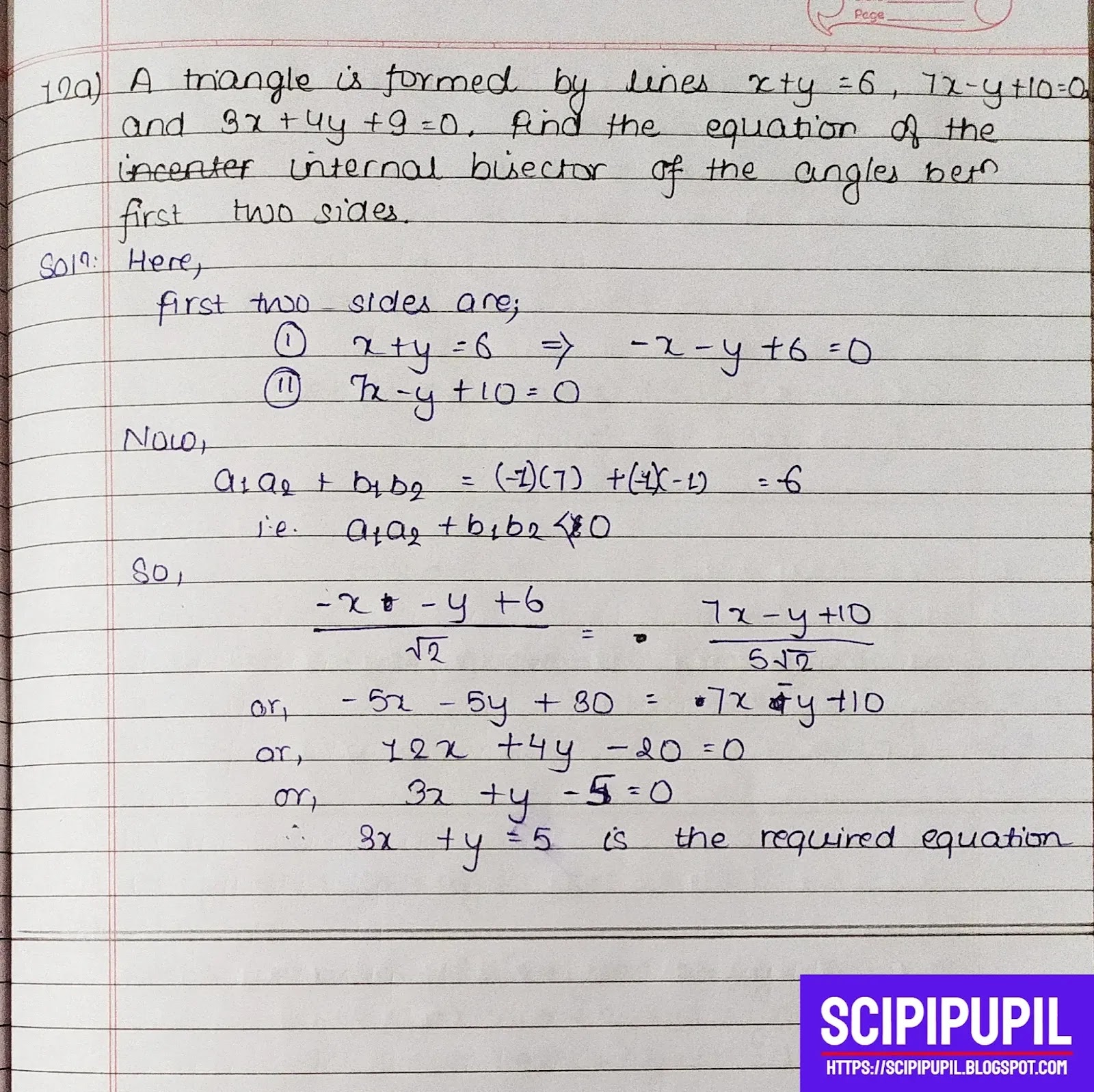
11. The origin is a corner of a square and two of its sides are $y + 2x =
0$ and $ y + 2x =3$. Find the equation of the other two sides.
Let us quickly recall:
- Opposite sides of a square are parallel to each other.
Solution:
Here,
Side 1 (OA): $y + 2x = 0$
Side 2 (BC): $y + 2x = 3$
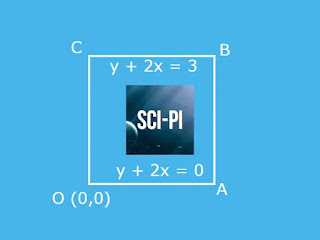
|
| Representation of given SQUARE |
Origin is a corner of square. Putting (x,y) = (0,0) in equations of side 1
and side 2, we get to know that the side 2 does not contain origin but side
1 does contain the origin. Therefore, we draw a figure alongside
representing the given square.
From figure,
$OC \perp OA$
So, equation of OC is $x - 2y = 0$
And,
$AB \perp OC$ but it does not pass through the origin. So, let the equation
of AB be $x - 2y + c = 0$
In a square, perpendicular distance between OA and BC = perpendicular
distance between OC and AB
$or, \dfrac{-3}{\sqrt{5}} = \dfrac{|c|}{\sqrt{5}}$
$\therefore c = \pm 3$
Hence, the required equation of line AB is $x - 2y \pm 3 = 0$
About the Textbook:
Name: Basic Mathematics Grade XI
Author(s): D.R. Bajracharya | R.M. Shresththa | M.B. Singh | Y.R.
Sthapit | B.C. Bajracharya
Publisher: Sukunda Pustak Bhawan (Bhotahity, Kathmandu)
Telephone: 5320379, 5353537
Price: 695 /- (2078 BS)
Buy this book: Basic Mathematics : Grade XI – Sukunda Publication


4 Comments
Question number 8e ,9 ,10,11 missing
ReplyDeletei will agree with him/her
DeleteSir in question 8a length of altitude is AD but why have u solved length of BC I didn't got that please can u explain why AD length is not solved as question says find the length of altitude and isn't AD length of altitude
ReplyDeleteYes it is. But the formula is applicable for the perpendicular distance of a point on a line.
DeleteYou can let us know your questions in the comments section as well.